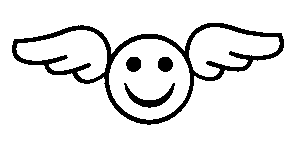Vlog like nobody's watching
How vloggers are taking a stand by not caring
2023-07-21
Text: Kate Fowler
A stranger’s summer holiday montage, a lyric video to an ‘80s ballad and a Love Island audition parody. All with less than 1000 views by a channel you’ve never watched before. It’s not the TikTok FYP, but YouTube. If you’ve accessed the site via a desktop in the past months, you may have noticed the site’s apparent introduction of videos with hardly any views appearing on the homepage, every time you refresh. The algorithmic change is yet to be confirmed by YouTube itself, but Reddit users have noted the change since late last year.
The change shows a sway by YouTube towards smaller creators and an encouragement to continue creating, even if the views aren’t paying off: something that creators like Zara McIntosh are echoing. McIntosh, 22, started vlogging on YouTube when she moved to Edinburgh for university and says she had a feeling these would become the good old days. “I knew when I'm older I'm going to look back on these,” she says. “I wanted to just really capture my life as it is right now because I'm just very happy and wanted to be able to save that.”
Posting to her TikTok account, McIntosh encouraged others to do the same, in what is becoming a rising wave of people choosing to vlog their days for the sheer joy of it and to use as a personal memory box to look back on without, they say, caring if anyone even watches it. McIntosh dubbed her TikTok people’s “sign” to start vlogging for fun too, in a post with over 6M views.
“Views aren’t something I care about in terms of my YouTube videos as even if no one watched them, I would still continue making them for myself to capture memories and because I find the process to be therapeutic,” says 19-year-old Katie Gulle, who also shared her decision to start vlogging this way in a TikTok video too.
This move couldn’t come at a better time for YouTube, which is grappling with the competition of another video sharing platform: TikTok. Perhaps the 18-year-old site, which offers a long-form ability TikTok does not, needs a new facet that being a home for nonchalant vloggers could provide. Just this week, TikTok creator Karissa Love with 200,000 followers announced her distancing from being “chronically online” with TikTok in favor of her “true love” YouTube.
Cher Xuan has been posting vlogs to her YouTube channel since she left high school and says she does it because she simply enjoys the process of making videos, from filming to editing them. Most of her videos, she tells me, don’t have many views at all but she’s still happy with it. “Do it for yourself,” she instructed in a TikTok caption of her YouTube video editing.
Despite the internet’s growing obsession with free speech, and all that comes with it, studies show that teens online actually value feeling welcome and safe online much higher instead.
It might not seem like it at first glance, but the niche trend could be a peaceful protest of sorts.
Jamie Cohen, a CUNY Queens College media studies professor who teaches Digital Activism, says these videos are a clear loop back to YouTube’s original roots, circling back to just before “a new type of vlogger.” In 2023, YouTube might be birthing Met Gala attendees and hosting famous people talking to their famous friends in bathrooms, but creators, before they could earn the big bucks, were simply missing their friends or wanting to talk about their day. “They didn’t care,” says Cohen. “It was a more utopian part before the corporations basically ate it all,” he continues, pointing to Disney buying over 55,000 channels as an example.
“I like making my YouTube videos because I grew up watching them myself so I feel like I'm living out what my childhood self would love to be doing”, proves Gulle. This throwback to the time on YouTube many remember and love is seemingly a part of a wider internet portal through time we’re waiting on. We’re on the cusp of a potential Tumblr return, led in part by Addison Rae, just over a decade since its heyday along with indie sleaze already being on the rise. Cohen suggests this to be a cry for a time when the internet wasn’t so big and bad, especially for young women online. Despite the internet’s growing obsession with free speech, and all that comes with it, studies show that teens online actually value feeling welcome and safe online much higher instead. “There was a point when you could use Tumblr to blog about whatever and not have a fear of a ‘chud’ trying to attack you for it,” he says. “There's gotta be a feeling of, ‘Remember when this didn't feel like this?’ They were probably younger and less tuned to what was going on, which is how we all grow up.”
The idea of authenticity is almost like a negative space. It's the spot you don't make.
Vlogging appeared to be at the beginning of the end, with YouTubers like Emma Chamberlain leaving the weekly vlog for different pastures, and those that survived, were more than just a video blog, with creators doing extraordinary things like gifting friends cars to keep viewers in. Thanks to TikTok however, the ordinary online has been rebranded as interesting and people want to watch strangers on their hot girl walk or eating vegetables with mustard. Cohen dubs it a “genre of nothingness.”
Ironically, we the viewers are drawn to this content in which the creator seems like they really couldn’t care less if we were there or not. Earlier this month, a 74-year-old Scottish pensioner gained over 400,000 subscribers overnight, after years of chin wagging with the camera as he cooks food outside. A British teenager discovered the videos while scrolling 0 view videos on YouTube, and proceeded to post it to his TikTok account. TikTok’s viral power needs no more explanation.
… For an audience who are so aware of the paradox of being authentic online, it doesn’t matter so much that it’s genuinely authentic, but just that it feels more authentic than what came before.
The allure of a persevering vlogger? The apparent authenticity it offers. “I would say I'm more open on my YouTube videos than I am in real life,” says Gulle. “I find it easier to talk to my camera than to humans. Sometimes I completely forget people actually watch the videos and people will say something to me about something I've said and I'm like ‘OMG, how do you know that?’.”
McIntosh says she feels more “raw” and calmed down on her YouTube channel compared to her TikTok account where she has 28,000 followers and feels she’s always doing “wild things” to build her channel, like talking about taboo subjects on a bus.
Xuan, McIntosh and Gulle all attest that they don’t think much about the idea of earning money through YouTube. McIntosh says she’s earned just £10 a month through AdSense. In a time when platforms like TikTok and YouTube are so heavily pushing monetization programmes and minor celebrities are charging people to send a happy birthday message, simply creating long-form content for the pleasure of creating feels like an act of pushback against online monetisation culture in itself.
“I think the motivation for YouTube has shifted a bit. There’s all the people that want to be influencers. They're thinking [off] brand deals, people that get PR, they're wanting to do all these big collaborations and then there's the other root of people who are like, no, I just wanna capture the moment,” says McIntosh. It’s not surprising this switch is happening. We’re on a constant World Wide Web search for authenticity online, according to researchers Meredith Salisbury and Jefferson Pooley, who in 2017 theorized that each new social media presents itself as a solution to previous media’s inauthenticity. Think the Instagram to TikTok to BeReal pipeline.
Can we ever be authentic online? “No,” says Cohen frankly. Although he acknowledges that this wave of vlogs may be an opportunity for people to express themselves in a space where they’re not performing, the knowledge that they’re being consumed at some point makes authenticity impossible. “The idea of authenticity is almost like a negative space. It's the spot you don't make,” says Cohen. “I think this is just a new style of performance, which is inauthentic, but it's the performance of authenticity. There’s no real way to ever use these distribution platforms authentically.”
Does the potential popularity of vlogging like nobody’s watching award itself with a self-imploding countdown? When a trend that runs on a disregard for views suddenly reaps views, it makes a catch 22 of sorts that could see people vlogging like nobody’s watching, in the hopes it will make people watch — considering how many post snippets of the vlogs to TikTok after, it could already be here.
Maybe though, for an audience who are so aware of the paradox of being authentic online, it doesn’t matter so much that it’s genuinely authentic, but just that it feels more authentic than what came before. Everyone was aware of the BeReal practice of rushing to make your current situation look fun in 10 seconds, but it still felt more authentic than Instagram stories, which at the start felt more authentic than Instagram posts.
With Gen Z, a generation raised and sometimes (*side eye to family vloggers*) born on the internet, OG YouTube might be the closest we will get to online authenticity. According to writer Rob Horning, each generation holds its own view of what authenticity looks like, and it’s the one we remember from being nine years old, he theorizes.
For most young people, that’s a world in which we were already online and one that’s potentially B.C. (Before Cinnamon Challenge.)
For more content like this, explore the rest of the Digiverse, or connect with us on TikTok or Instagram. If you’re a brand or business and want to inspire your audience in innovative ways, reach out to our strategic & creative lab effy@thedigitalfairy.co.uk.

Welcome to the Digiverse, your portal to internet enlightenment.
From IRL to URL, digest the best of algorithm-driven culture – news, trends and insights – powered by The Digital Fairy.










